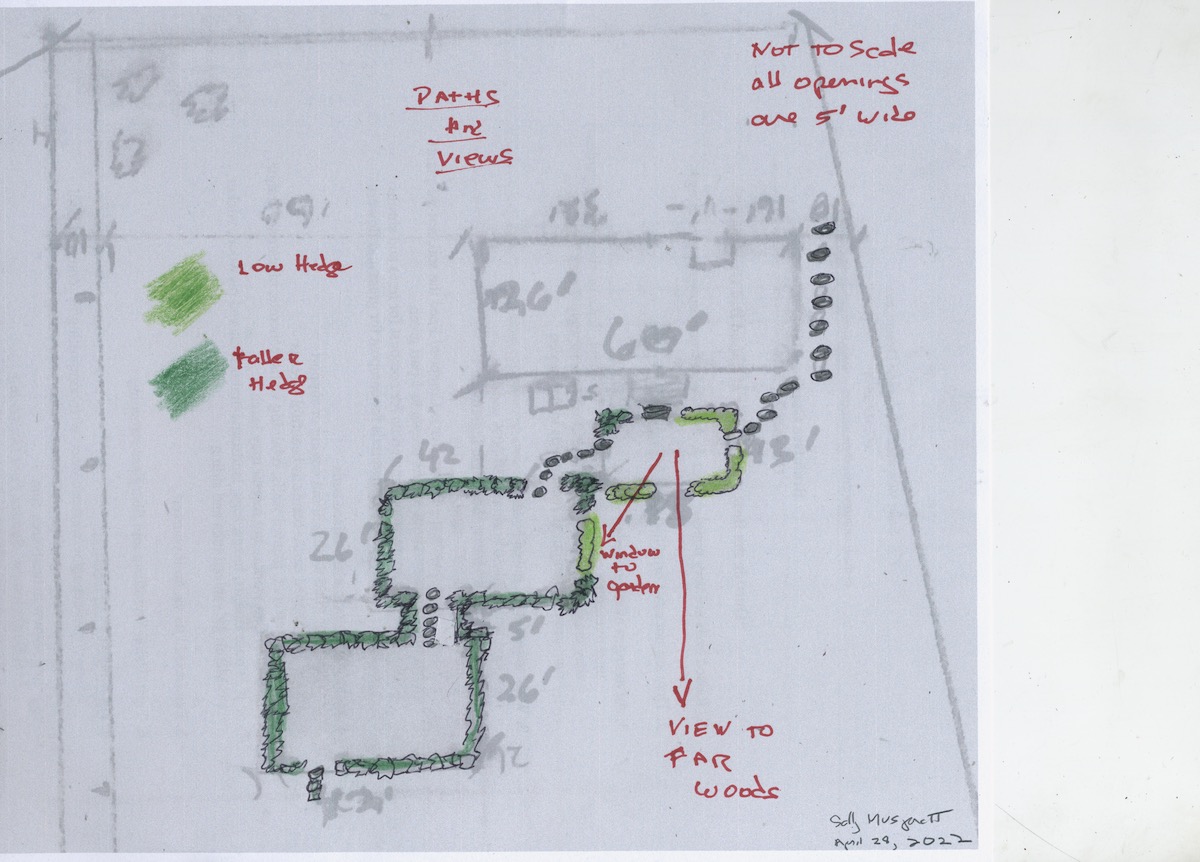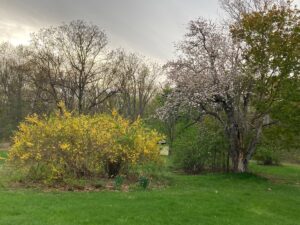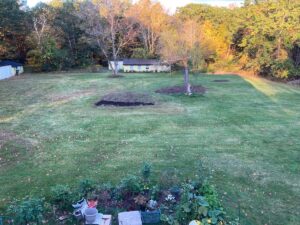May 31, 2022
By Gardeners Exchange member Juliet Silveri
“Your work clearing out your backyard landscape has been exemplary,” said my landscape designer at the beginning of April, as she surveyed the back yard. Last season I had had masses of invasive bushes, weeds, and forsythia cleared out, then had the areas either rototilled or excavated to eliminate the stumps and roots. In the bare patches of rich dirt that remained, I longed to plant at least a few small shrubs and perennials. But the plan is to keep the areas away from the house as pastoral and simple as possible, so instead I am reseeding those areas with grass seed. “Remember, quiet frame, rich lining (the lining is the area close to the house),” she said. “This style fits in with the landscapes around you.” I live in Shirley’s historic center, surrounded by farmhouses that used to have farming sorts of agriculture. My neighbor across the street sits on forty acres, on which he used to raise beef cows. He currently grows hay and bales it for sale.
My designer warns me away from “cute and suburban,” which is the landscape design style I have grown up with, having lived on lots of under one acre, until I bought my current property. This required quite a shift in my thinking. So I have had removed five rather large and most definitely cute and suburban, Endless Summer, or some such, hydrangeas, from the front foundation area of my house. These shrubs were an unfortunate choice for the highly visible location, made by the former owners of my property. They were about twenty-five feet from a busy street, displaying for all who pass by the lovely sight of dead sticks for five or six months out of the year. I have, however, not murdered them, instead opting to donate them to my garden club.
“I am trying to work on a design that will be more dignified than ‘pretty,’ more rural than residential…the flowers and flowering shrubs would be near the house and behind it, not at the periphery. The exterior would be the quiet frame…the interior the rich lining—this is the usual pattern in country estates.” You see—her understanding of what I want is better than my understanding–this is why I hired her.
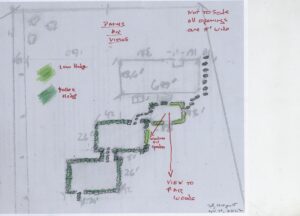
There will be a continuous path that meanders diagonally, from the left of the driveway in front of my house, around the garage to the back, through the terrace, leading into the first perennial bed, then diagonally through that, leading into the second perennial bed. The second one sits offset, up to the right, and diagonally above, the first one. It is easier to visualize if you look at the sketch in this article. The process of following paths through my gardens will be an engaging one—a process of continuously walking and seeing enchanting things as one turns a corner or enters a garden. The paths will be either grass, or stepping stones in grass.
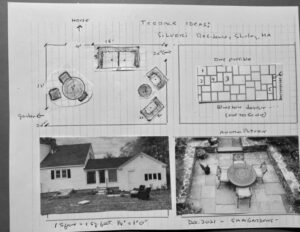
I will close with another interesting quote from my designer: “You refuse to come to terms with the fact that you will need to plant a meadow, to reduce your overall maintenance, and as a visually pleasing way to use the still large spaces in your back yard.” She said, “you need to think about how much maintenance you can bear; and after all, you’ll have as large a perennial garden as you could ever want.” And that last phrase, the bit about the perennial garden–was the happiest phrase. I don’t know how to go about absorbing the intense joy I feel when I think of my gardens-to-be. But I believe I will find a slow and steady absorption, when the sights, sounds, smells, and feel of the garden gradually, season through season, creep into my soul, and intertwine themselves into my life.
During the last year and a half of planning and clearing, the most difficult part has been not having a perennial garden. But we needed to put a lot of thought into the plans, and this thing can only be done with patience. The longed-for gardens will be created very soon now.
